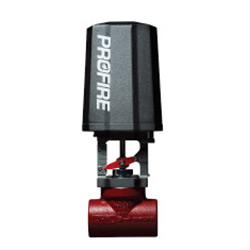Explore the World of Immersive 360-Degree VR Cinema Experiences
Exploring the World of VR 360 Movies
In recent years, the entertainment industry has undergone a significant transformation with the advent of virtual reality (VR) technology. Among the most captivating forms of VR content are 360-degree movies, which offer viewers an immersive experience that traditional films simply cannot match. This article delves into the fascinating realm of VR 360 movies, exploring their features, the technology behind them, and their impact on storytelling.
What are VR 360 Movies?
VR 360 movies are films that capture footage in every direction, allowing viewers to look around in a virtual environment as if they were part of the scene. Unlike standard films where the audience is confined to a single viewpoint, 360-degree experiences empower viewers to control their perspective. Whether it’s a serene landscape, a bustling city, or an intense action scene, viewers can explore the environment at their leisure, creating a uniquely personal experience.
The Technology Behind 360 Movies
The creation of VR 360 movies relies on specialized cameras designed to capture panoramic footage. These cameras often utilize multiple lenses to simultaneously record in all directions, stitching the footage together to form a seamless spherical image. Some notable systems include rigs with several cameras arranged in a specific configuration, which allows for higher resolution and improved quality in post-production.
In addition to filming techniques, sophisticated software is employed to edit and enhance the footage. This includes adjusting audio, as spatial sound plays a crucial role in making the experience truly immersive. The seamless integration of visuals and sound helps anchor the viewer in the environment, enhancing the realism of the experience.
Immersive Storytelling
vr movies 360

One of the most exciting aspects of VR 360 movies is their potential for storytelling. Traditional narratives can be transformed into interactive and immersive experiences that engage audiences on a deeper level. Filmmakers are now experimenting with new forms of storytelling where viewers are not just passive observers but active participants. For instance, in some VR experiences, viewers can choose where to look, what to focus on, and even interact with certain elements within the scene.
This shift in storytelling has immense implications for various genres, from documentaries that place audiences in the midst of real-world events to fictional narratives that allow for exploration of fantastical worlds. VR 360 movies can also be used for educational purposes, providing students with an engaging way to learn about history, science, and culture by experiencing events and environments firsthand.
Challenges and Future Prospects
Despite the rapid advancement of VR technology, creating high-quality 360 movies presents several challenges. The need for high resolution, stable footage, and immersive audio can make production complex and costly. Furthermore, the issue of accessibility remains a barrier; VR technology is not universally available to all audiences, limiting the reach of these innovative films.
However, the potential for growth within this medium is immense. As technology continues to evolve, we can expect greater accessibility, better production quality, and more captivating stories. With the rise of VR headsets and advancements in computer graphics, filmmakers are likely to push the boundaries of creativity and further explore the possibilities of 360-degree storytelling.
Conclusion
VR 360 movies represent a remarkable evolution in the world of cinema, offering unprecedented levels of immersion and interactivity. As technology continues to advance, the future of storytelling through 360-degree films looks promising. Whether for entertainment, education, or experiential narratives, the impact of VR on our viewing habits is set to reshape how we engage with stories and the world around us. As we journey into this exciting frontier, audiences can expect to be transported to unimaginable places, experiencing stories like never before.
-
Top Amusement Equipment Manufacturer Rock n Roller Coaster & Carousel ManufacturerJun.10,2025
-
World's Scariest Roller Coaster Experience Ultimate Thrill & HeightJun.10,2025
-
Ultimate Thrill Ride Roller Coaster High-Speed, Safe AdventureMay.30,2025
-
Carousel Mansfield Rides Premium Indoor & Event SolutionsMay.30,2025
-
T3 Roller Coaster High-Thrill, Safe Ride for Theme Parks & ResortsMay.30,2025
-
Roller Coaster Cart Design Custom-Built & High-Safety Thrill Ride VehiclesMay.30,2025
